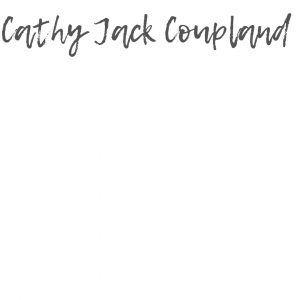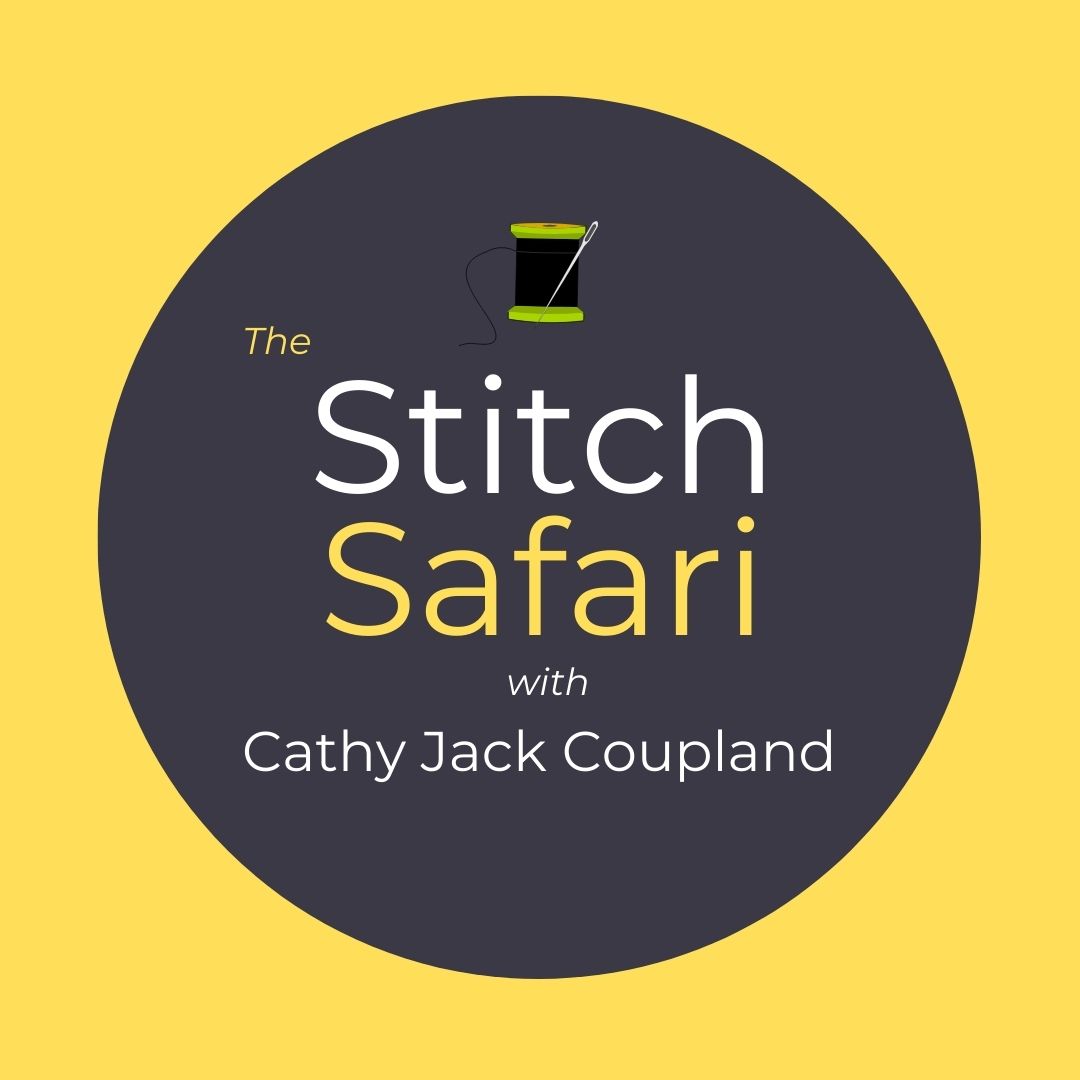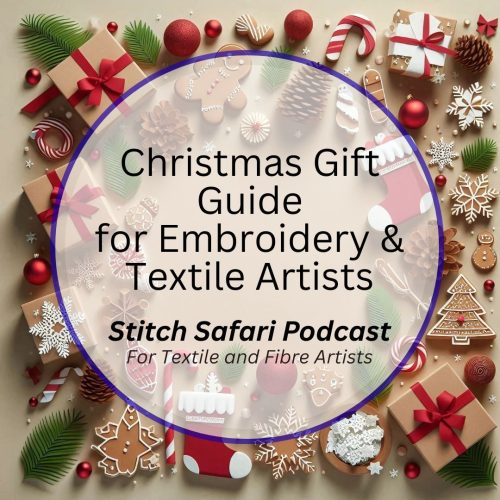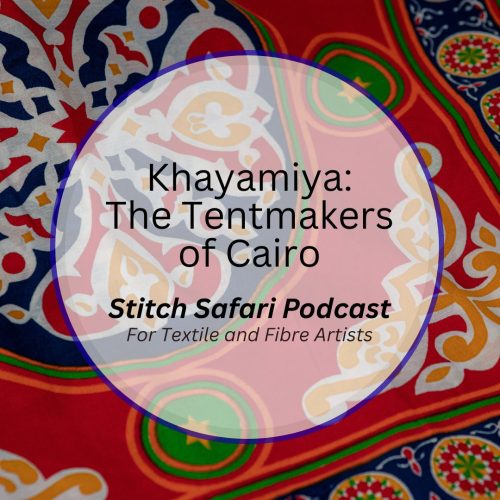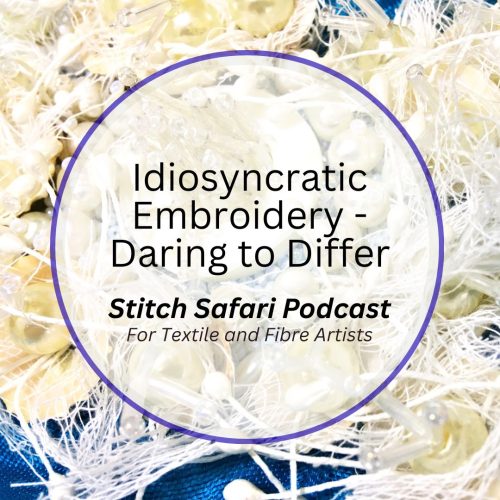‘If I can draw it, I can stitch it’ is my mantra.
I’m talking about using a sewing machine as a mark-making, art and design tool to create lines, shapes, and patterns using a needle and thread, often with the feed dogs disengaged, forming personal narratives and amazing textures.
The machine becomes an extension of ourselves and a means of describing the world around us. It can produce many marks and qualities to express artistic vision and perceptions, including colour, texture, dimension and pattern—just as a painter works with brushstrokes to create line, shape, and movement. The episode on Alice Kettle’s work justifies that.
The appeal of the sewing machine however has fluctuated from an invention intended to ease the tedious hours of domestic hand stitching needed to create and embellish garments and household items, to the creator of often described inferior mass-produced machine embellishments, to the perception of machine embroidery as an art medium in its own right worked and controlled by the maker’s unique vision and self-expression.
If you look closely, there is a parallel between drawing, painting, and machine stitching, but with the added potential of construction, layering and creating dimension or working with combinations of these techniques.
This is a battle of wills. Who will win? Man or machine?
Join me as I explore the pleasure of working with and creating unique textile art using the domestic sewing machine.
Dr. Jennifer Harris in her Introduction to the book Machine Perspectives by Alice Kettle and Jean McKeating cites William Morris and others of the Arts and Crafts Movement in the UK, normally known for their promotion of all things hand-made working towards improving the quality of commercial and industrial design by working with machines. Morris wrote: ‘I do not believe we should aim at abolishing all machinery, rather we should be the masters of our machines and not their slaves, as we are now. It is not this or that machine that we want to get rid of, but the great intangible machine of commercial tyranny, which oppresses the lives of all of us.
Alice Kettle writing about her technique development process states that she had to ‘break the unruly will of this animal to become its master’.
Strong words that perfectly illustrate the will of the maker overpowering that of the machine – and sometimes that’s exactly what is required.
So is modern artistic machine embroidery a subversion of the original intention of a sewing machine?
It can be looked at that way, or it can also be seen as making the most of what a machine has to offer and the user’s unique vision, strength and persistence, channelling those attributes in different directions with very different and often unexpected outcomes.
And therein lies the beauty of modern-day machine embroidery.
I’ve talked about Alice Kettle, but numerous other artists work with machine embroidery to produce unique and individual art.
Sue Hotchkiss constructs abstract forms to highlight the beauty of ageing and decay incorporating printing, stitch, texture, and colour – exaggerated and intensified to reveal the complexities of her images or Dr Nigel Hurlstone who in 2023 was awarded the prestigious Fine Art Textile Prize in an international juried competition recognising and celebrating artists using textiles, cloth and thread as their primary medium. Judge Jo Hall commented, ‘Hurlstone’s work is a meticulous marriage of concept, execution and approach’. Or go back and study the work of Audrey Walker who combined hand and machine work to create embroideries of subtle beauty, mixing colours to perfection to create shadows and mood. There’s also the work of Nicola Henley, who works with silk screens, printing and embroidery.
All so unique yet universal through their use of machine stitch as a tool to create a dialogue between drawing and stitch – they form narratives of texture, and sweeps of colour, line and movement demonstrating the potential between mark making on cloth using, in many cases, fairly simple machine embroidery processes.
Nigel Hurlstone, writing in Machine Stitch Perspectives states this: ‘Through a process of discovery and exploration, needle and thread can share an incredible proximity to the media of inks, charcoal and pencil, and the rhythms and motions of the hand that draws, even though the ‘ground’ may shift from the smooth crispness of paper to the fluid softness of textile and thread.’
It’s a paradox he goes on to state between that fluid process of hand drawing enabling gestural subtleties, tonal variations and spontaneity to stitching with a sewing machine producing a linear mark, that can be manipulated by thread, tension, speed, direction and volume of stitch – the two processes appear incongruent. Yet they are not when you take the time to exploit that close relationship between a drawn mark or image and the wealth of machine-produced processes that offer the opportunity to mirror that mark onto fabric.
The real question is can all drawn marks be replicated by a sewing machine? The answer is no – but between those drawn marks and the execution of them in stitch ‘is a gap or fissure between the original or the first gestures, from something that is seen or felt, to the making of marks, surfaces or images in fabric and thread where the most magical yet indefinable quality of embroidery is to be found’, writes Nigel Hurlstone.
Many embroidery artists do not work with a pre-conceived drawn mark but rather rely on this chasm of the exploitation of memory, and reliance on line, shape and movement to guide them. Many, however, depend on sketchbooks, such as Nicola Henley who claims that, ‘Every piece comes from drawings in my sketchbook, Sometimes I get involved in drawing the birds more analytically, to understand their form and movement.
This is where the concept of machine-made lines and shapes becomes more coherent and relevant to the maker’s and the viewer’s experience – that connection to the drawn mark.
A narrative emerges – a story that intrigues, shocks, soothes or renews memories or recollections of our own.
How can we achieve this using a sewing machine?
We have to look at a sewing machine as a tool that can emulate most of the marks created on paper, and then learn its potential to enable complete control of its abilities.
Experimentation and sampling are essential to understand the machine’s and the user’s capabilities. Create and recreate. It’s an endless cycle of learning and understanding not only of the machine itself but how we can manipulate it to our expressive needs.
Alice Kettle speaks of breaking its unruly will to become its master – well, it’s no different for anyone willing to take chances to create unique embroidery and texture.
What thoughts go through our heads each time we sit at our machine? What are we looking for each time we begin to stitch?
Several categories offer the ability to control and dominate: colour, tension, texture, density and light, and stitch construction and stitch direction – and in this instance, I’m referencing working on a domestic machine with the feed dogs down or covered.
Let me give a quick overview of each one:
Colour: Colour choices are personal and subject to the colours surrounding the current stitching, but must also be thought of in conjunction with the base cloth (if it will be seen). Colour promotes a sense of mood, nostalgia or excitement. It can unite and unify, or create a point of interest. It can make us sit up and take notice, or blend into the background. It depends on the maker’s intention.
You can be bold and dramatic, but also achieve subtlety and elegance by mixing similar tonal colourings working with two or more threads through the needle, mixing in another colour on the bobbin and playing with the bobbin tension to bring that thread to the surface.
Using variegated threads also offers opportunities. How quickly are the colours repeated? Working in circles will be quite different from working in long sweeps of line, or using that thread in the bobbin to create a watercolour-like quality. The question is, what effect do you want to achieve?
Take the time to assess. Stand back, reflect and learn to respect your machine and your intuition.
Tension: This is one of the most underrated and underused functions of the sewing machine. Learn to love working with tension and manipulating it to create your vision.
Perfect tension is achieved when the lock stitch is even top and bottom – no pulling and no stress on the thread or the stitch. But we don’t always want to work with perfect tension. Interesting textural effects can be achieved by either tightening or loosening the bobbin tension.
Tension can be affected by so many factors including thread brand, thread thickness, thread colour, type of spool, how much thread is on the spool, the age of the thread, thickness of the thread, paint on fabric, number of layers to stitch through and the amount of stitching already on the fabric and may be rectified through adjustments via the top tension.
Tension is your friend – manipulate it.
Texture: Visual texture is appealing and learning to control speed is essential. Do you stitch fast and move the fabric slowly or vice versa? You’ll achieve different results either way because the stitch lengths will be quite different. Working with the feed dogs down means we are in control. It’s the most freeing and versatile form of machine embroidery I know. You can also work with automated machine stitches with the feed dogs down to achieve interesting textural effects.
Working from the back of the work with a thicker thread in the bobbin is another way to incorporate texture – often this is a great way to utilise threads that cannot work through the top of the machine.
Density of Stitch, Stitch Direction and Light: These are elements not often thought about. Using rayon or polyester threads, mixed with metallics will give a shimmer and sheen to work that can be very appealing. Add to that density of stitch meaning that you’re putting a lot of stitchwork into certain areas of the fabric to manipulate the ground fabric and cause it to ripple and move. In some cases quite dramatically. Light bounces off those rippling surfaces at different angles adding even more visual interest.
But is density something you want to work with or not? Some artists rely on a flat 2D surface to create their art, so need to work in a hoop.
Stitch direction is also paramount as it can direct the eye around the work, affecting how light is reflected and bounced off the surface of the stitching.
Stitch Construction: There are many ways to construct a stitch. Feed-dogs down encourages freedom and spontaneity using either a straight stitch or the automated pre-loaded decorative stitches already on the machine. However, working with different feet and needles also offers new approaches to stitch construction. Look to the manufacturer’s website to see what is available.
It’s worth investigating different foot options and working with twin needles to achieve interesting results.
Research these artists who create amazing art, marked with their vision.
- English embroiderer Audrey Walker became known for developing an innovative machine and hand embroidery aesthetic combined to create striking figurative, wall-hung works of art.
- English embroidery artist Alice Kettle – the epitome of creative, contemporary machine artistry
- American embroiderer Cindy Hickok. She writes, ‘I paint each day, with thread as my medium, the needle as my paintbrush, the sewing machine an extension of my arm. With foot on the pedal and tongue in the cheek, I create works that satisfy my desire to express life as I see it’.
- American studio artist Carol Shinn creates photo-realistic machine-stitched images mixing colours
- English embroiderer Marion Jazmik is inspired by macro photography and uses machine and hand techniques to emulate those textures
- English embroiderer, Lindsay Taylor works in 3D textile art
- American embroiderer Susanne Gregg concentrates on delicacy, transparency and space
- English embroiderer Sue Rangeley creates lacy, dimensional artwork
All so different, all unique.
So what is it that draws us to machine-made stitch?
Versatility has to be its main attraction – that ability to move between the sheer or the lacy using wash-away base fabrics through to 3D and dimensional works.
Work can be small and dainty or something that emulates large tapestries. It can be soft and delicate or heavy and imposing.
The finished work can be gently draped or used as a solid construction.
But it’s that tactile nature of machine embroidery many find irresistible – we want to reach out and touch its mesmerising beauty if only we could.
According to English embroidery artist Alice Kettle: ‘Textiles are about sensibility; the emotional content is the textile, the sense of feeling and seeing’.
But there’s a fine line between knowing when to stop – when too much becomes crude and heavy, or when too many techniques spoil the effect – and that’s when true mastery comes into play.
It’s all about knowing when enough’s enough.
But to become Masters of our machines, experimentation and patience are key.
Knowledge and understanding of our artistic sensibilities should align with our ability to work with our machines.
Mastery of the sewing machine is one of the most satisfying accomplishments an embroiderer can achieve – it’s an international language without boundaries, created stitch-by-stitch.
In the next episode of Stitch Safari, I’ll review some fantastic machine-embroidery books that inspire further exploration of technique and the pleasure of working with machine-made stitch.
